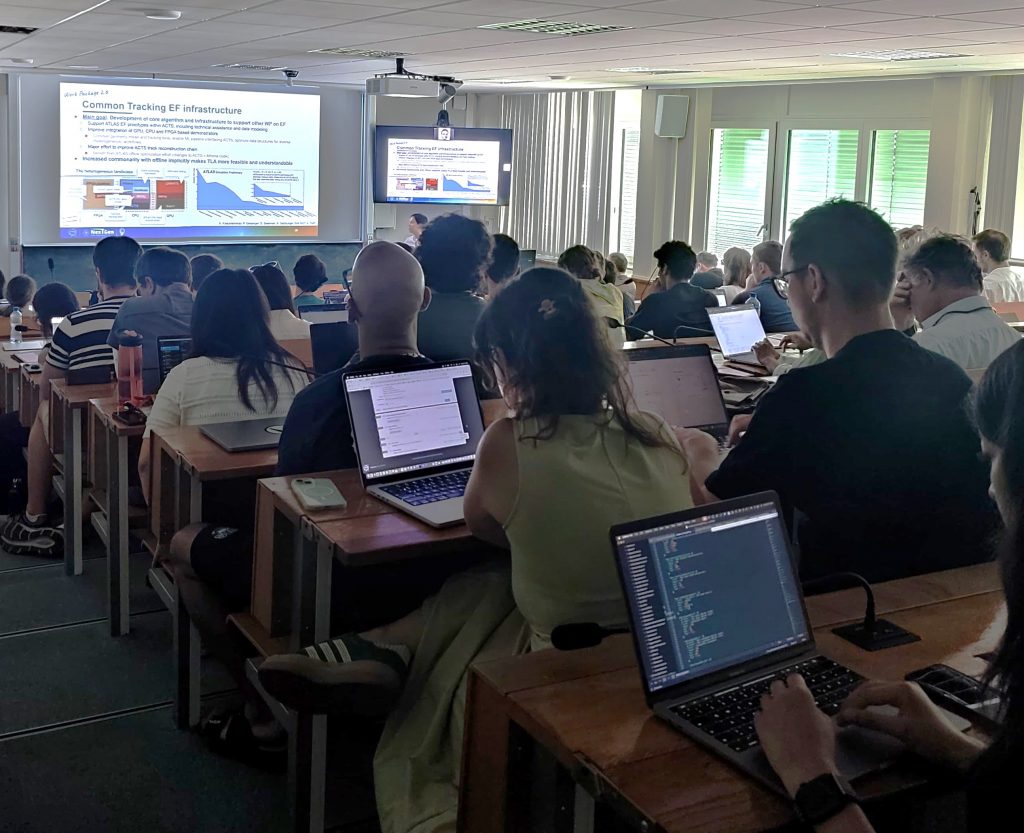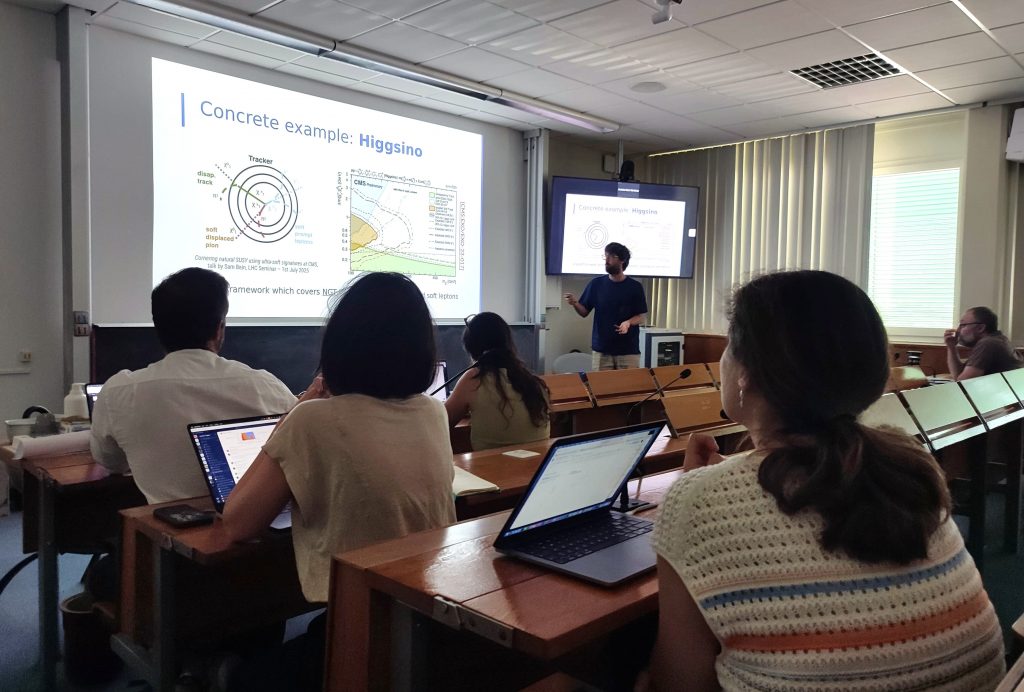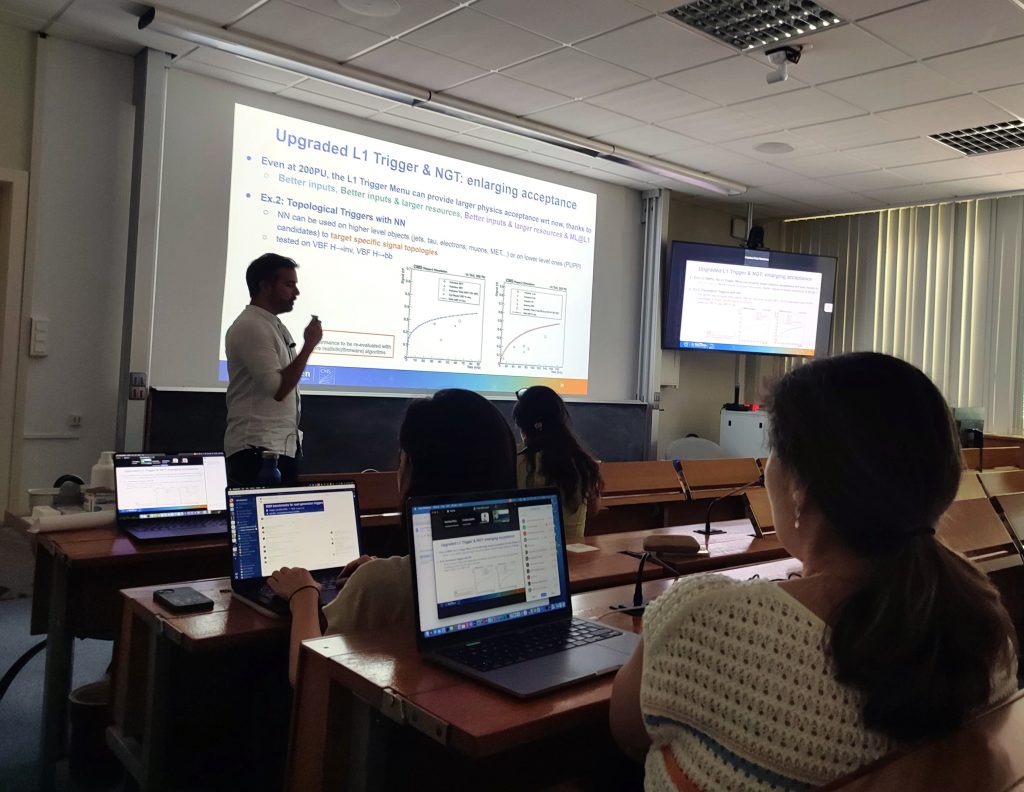
On 4 July 2025, the first NGT workshop dedicated to BSM benchmarks for Next Generation Triggers took place at CERN’s Theory Department, bringing over 100 participants both in person and online together. The event marked the launch of discussions under Task 1.6 of the Next Generation Triggers (NGT) project, aiming to define benchmark BSM (Beyond the Standard Model) scenarios that could guide and stress-test advanced trigger strategies for the HL-LHC phase.
Held in conjunction with the Evolving Beyond the Standard Model organized by the CERN TH Department, the workshop served as a bridge between theoretical model building and the practical trigger capabilities enabled by NGT technologies.
From Models to Triggers: Exploring New Signatures
The afternoon began with a theoretical overview by David Curtin (University of Toronto), who outlined a wide landscape of exotic BSM signatures — from displaced decays to long-lived particles and non-standard objects — offering insight into how such scenarios could be captured by upgraded real-time systems.


The workshop continued with back-to-back sessions from the ATLAS and CMS communities. Noemi Calace (CERN) presented the ATLAS perspective, highlighting how future trigger systems could unlock sensitivity to BSM models previously inaccessible due to limited bandwidth or latency constraints. She reviewed potential trigger strategies that could improve sensitivity to exotic signatures, particularly in light of planned detector upgrades and real-time tracking developments.
On the CMS side, Efe Yigitbasi (Rice University) and Elisa Fontanesi (CERN) walked participants through current efforts within CMS-NGT to simulate and reconstruct BSM-inspired topologies. Their talk showcased the need for realistic benchmark scenarios to shape trigger algorithm design and guide firmware development in the coming years.
Open Floor: Aligning Theory and Experiment
The workshop closed with a collective brainstorming session, moderated by Guilherme Guedes, where attendees debated how to define common benchmark models that are both phenomenologically compelling and technically viable for real-time implementation.
This event marks a foundational step in building a shared roadmap for BSM trigger development, where model-driven priorities and technical constraints go hand-in-hand. As new ideas mature and tools from NGT become available, these conversations will play a pivotal role in shaping future trigger strategies at the HL-LHC.
For more detailed information of each talk, you can check all the presentations by clicking here.